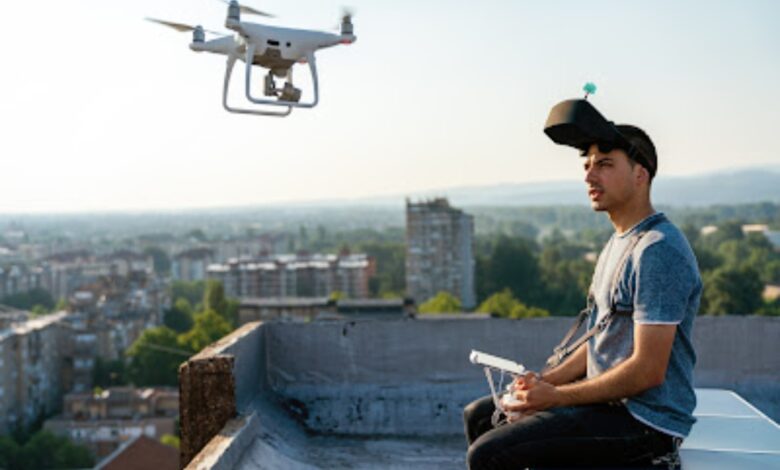How to Use Drone Footage for Real Estate Marketing

In the competitive world of real estate, making a listing stand out can be challenging. One powerful tool that has emerged in recent years is the use of drone footage. By showcasing properties from a unique aerial perspective, drone footage can add a touch of sophistication to marketing materials, giving potential buyers a comprehensive view of the property and its surroundings. Here’s a guide on how to use drone footage effectively in real estate marketing.
The Benefits of Using Drone Footage in Real Estate
A Unique Perspective
Drone footage offers a view that traditional photography simply cannot match. With aerial shots, buyers can see the property from above, offering a sense of scale, layout, and a better understanding of the property’s location and surroundings. This perspective is particularly valuable for:
- Large properties or estates: Showcasing the full extent of the land.
- Waterfront properties: Highlighting proximity to water and views.
- Neighborhood highlights: Demonstrating the area around the property, including parks, amenities, and nearby attractions.
Capturing the Bigger Picture
Buyers often want to know more than just what’s inside the house. Drone footage captures the neighborhood, property lines, landscaping, and proximity to local amenities, which are all major factors when purchasing a home. A well-planned drone video can help convey a clear idea of what it feels like to live there.
Engaging Marketing Content
In the digital age, attention spans are short, and visuals are key to catching someone’s eye. Drone footage offers a stunning, cinematic quality that engages potential buyers and keeps them interested in the listing longer. This can significantly increase the number of views on online platforms and social media.
Planning Your Drone Footage
Know What to Highlight
Before taking to the skies, determine what aspects of the property are worth showcasing. Create a shot list that might include:
- The front of the house: Start with a sweeping shot of the front to create a strong first impression.
- The backyard and landscape: Showcase outdoor spaces like patios, pools, or gardens.
- Nearby amenities: If the property is close to parks, schools, or waterfronts, consider including shots that highlight these features.
Choose the Right Time of Day
Lighting can make or break drone footage. The best time to capture stunning drone shots is during:
- Golden Hour: Early morning or late afternoon, when the light is soft, shadows are long, and the footage looks warm and inviting.
- Clear Days: Avoid shooting when the weather is overcast or rainy. A clear sky makes properties look more appealing and vibrant.
Obtain Necessary Permissions
Before flying your drone, make sure you comply with local drone regulations. Depending on the area, you may need special permits, and it’s always crucial to follow FAA guidelines regarding height limits and no-fly zones, especially in residential areas.
Best Practices for Capturing Stunning Drone Footage
Smooth, Slow Movements
One of the keys to creating professional-looking drone footage is to keep the camera movements smooth and steady. Avoid quick or jerky movements, as they can be disorienting to viewers. Slow, sweeping shots allow potential buyers to take in all the details of the property.
Mix of Aerial and Ground Shots
While aerial footage is impressive, complement it with ground-level shots to provide a comprehensive view of the property. A mix of perspectives gives potential buyers a full picture of the home, inside and out.
Use Flyovers to Show Layout
A flyover shot can give viewers an idea of the layout of the property, including where key features like pools, gardens, and garages are located. This is especially useful for larger properties or those with expansive outdoor spaces.
Editing Your Drone Footage for Maximum Impact
Keep It Short and Engaging
Attention spans are short, so keep the video concise—ideally around 1 to 2 minutes. Highlight the best features without overwhelming viewers with too many details. Focus on creating an emotional connection with potential buyers through beautiful, captivating imagery.
Add Background Music
Background music can set the mood and enhance the viewing experience. Choose music that’s calming yet uplifting to complement the visuals. Avoid anything too loud or distracting, as it can take away from the property itself.
Highlight Key Features with Text Overlays
Text overlays are a great way to point out important features of the property during the video. Use short, descriptive phrases like “Expansive Backyard,” “Breathtaking Water Views,” or “Newly Renovated Kitchen” to draw attention to key selling points.
Where to Use Drone Footage in Your Marketing Strategy
Property Listings
Add drone footage to your property listings on platforms like Zillow, Realtor.com, or your personal website. Listings with video content generally see higher engagement, which can lead to faster sales.
Social Media Platforms
Social media is an excellent tool for increasing visibility. Post your drone footage on platforms like Instagram, Facebook, and TikTok. Use eye-catching captions and engaging descriptions to draw viewers in. Short drone clips or teaser videos can be especially effective for generating interest.
Virtual Tours and Open Houses
Integrate drone footage into virtual tours or open house presentations. This allows potential buyers who can’t visit in person to experience the property from every angle, giving them a thorough understanding of its features before stepping foot on the premises.
Working with a Professional Drone Operator
Why Consider Hiring a Professional?
While consumer-grade drones are widely available, capturing high-quality footage that looks professional often requires experience. A professional drone operator will have:
- Expert piloting skills: Ensuring smooth, cinematic shots.
- The right equipment: Including high-quality cameras and stabilization tools for the best possible footage.
- Editing expertise: To create a polished final product that is ready for marketing.
Choosing the Right Professional
When hiring a drone operator, consider their experience in real estate specifically. Find a professional drone pilot at www.part107.com to ensure you’re getting qualified expertise. Ask to see their portfolio and discuss the specific features of your property that you want highlighted. A good drone operator will understand how to present properties in a way that resonates with potential
Safety Considerations
Observe Local Laws and Regulations
It’s crucial to comply with local laws and regulations when using drones. Fly below the maximum allowed altitude (typically 400 feet in the U.S.), avoid restricted areas, and always keep the drone within your line of sight.
Respect Privacy
Respect the privacy of neighbors when filming. Avoid capturing footage of other homes or private property that isn’t part of the listing. Always inform nearby residents of your plans to avoid any misunderstandings.
Conclusion
Using drone footage for real estate marketing can significantly elevate your listings, providing a unique perspective that is engaging and informative for potential buyers. By planning carefully, capturing stunning visuals, and incorporating professional editing techniques, you can create a powerful marketing tool that highlights a property’s best features. Whether you’re a real estate agent or a homeowner, leveraging drone technology effectively can be the key to standing out in a competitive market and making a lasting impression.



